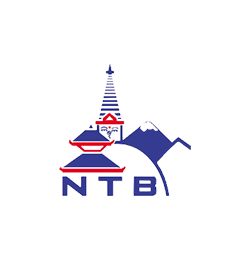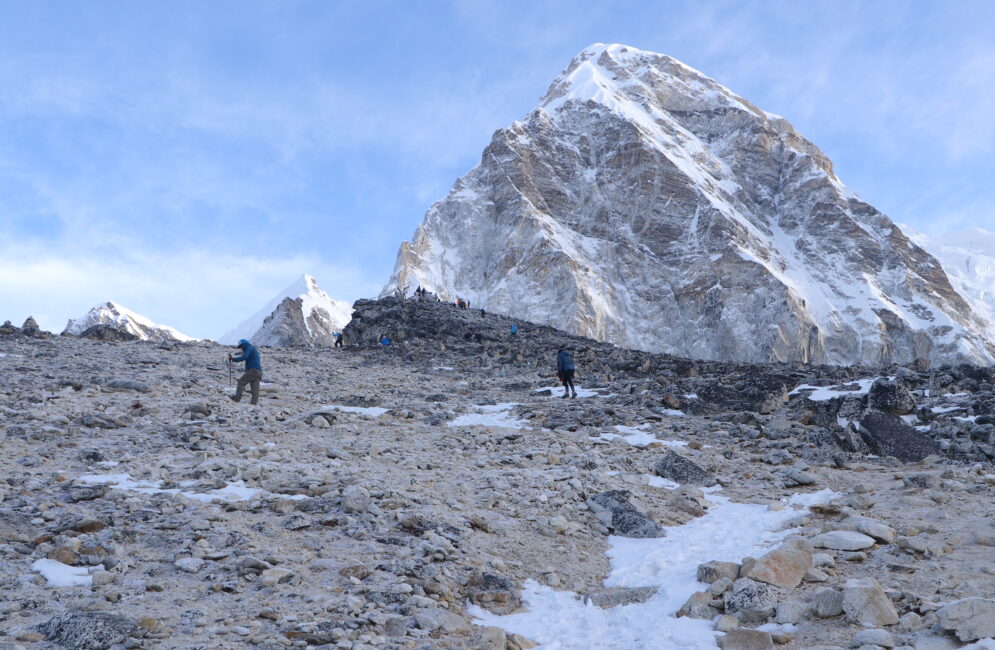
The legendary Mount Everest (8848m) has been a dream destination for nature lovers and adventure lovers throughout the world. Located in the center of the great Himalayas, deep in the Khumbu region of Nepal, this destination draws thousands of tourists every year. Even though summiting the highest mountain in the world may seem out of reach for many, different paths provide a taste of Everest without undergoing lengthy and strenuous training. Join the Everest Trek, an exciting adventure that will take you deep inside the Sagarmatha National Park, giving you a quick look at the region’s breathtaking beauty.
Trekking in Everest remains a dream for many, and with White Hill Adventure we are here to help that dream come true. In this blog, we’ll be going through some of the most essential information regarding trekking in Everest including challenges, preparation, and rewards.
On the way to Everest Base Camp
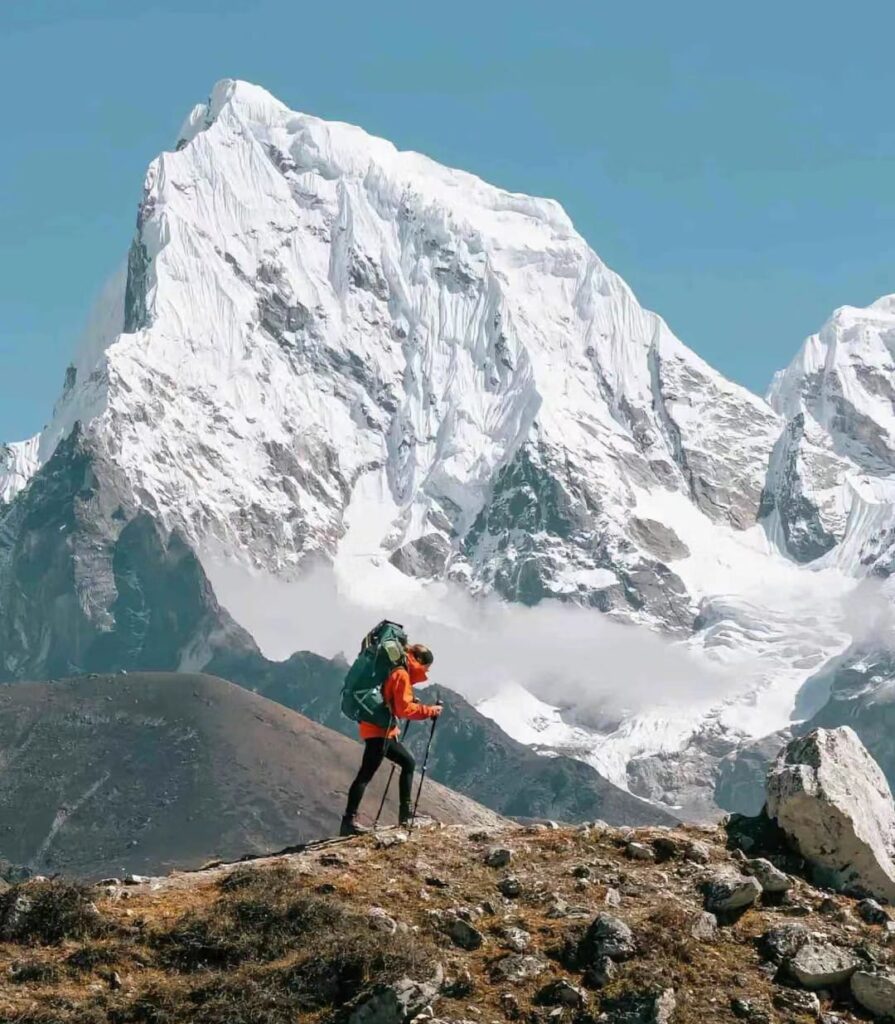
The Appeal of the Everest Trek
The Everest Trek is arguably the best trekking destination, which provides great chances to witness how wild nature can get. The snow-capped peaks surrounding you from all four sides make you realize the greatness of the mountains, and how massive they can be. The combination of culture and hospitality of the Sherpas add to your journey as you pass through mesmerizing villages. The changing scenery from lush forests and charming towns to majestic peaks in the alpine region is a calming experience. This trip is filled with natural and cultural treasures at every turn.
You’ll be spending nights in teahouses run by Sherpa families (Sherpas are renowned for their endurance and mountaineering skills). As you join this trek, you come to understand it’s not always about the destination; what counts are the memories made along the trail and experiences that add up to make your journey a complete one. Trekking in the Himalayas and joining an Everest Trek takes you through some of the highest places in the world living up to its name as the roof of the world. At such an altitude, one must have a good understanding of the environment, essential risks, and challenges involved. With certain precautions and knowledge, everyone can have a good time in this region.
Where Does Everest Lie?
Mount Everest (8,849 meters) lies deep in the Himalayas, in the Sagarmatha region of Nepal. From Kathmandu, the capital city of Nepal, Mount Everest is approximately 160 kilometers (100 miles) northeast. On a clear day in Kathmandu, the peak of Everest is visible from major checkpoints like Phulchowki Danda in Kathmandu. Almost all the trekking routes to Everest begin with a scenic flight from Kathmandu to Lukla (40 minutes). This short time of about 40 minutes offers you some of the wildest cinematic aerial views of the whole Khumbu region. From Lukla, trekkers embark on a multiday journey traversing diverse landscapes and navigating challenging paths. The maximum point in Everest Trek is Kala Patthar at (5,555 meters), and the famous Everest Base Camp sits at 5,364 meters. Reaching these destinations may take anywhere from 12 days to 14 days from Kathmandu depending upon the itinerary and route chosen.
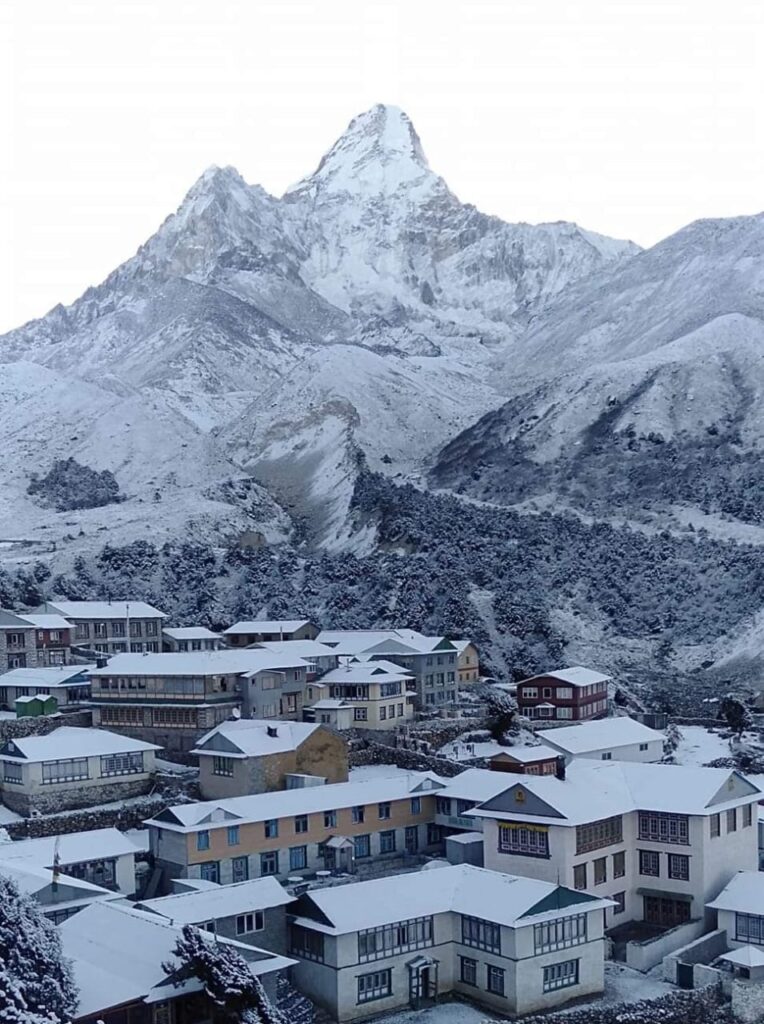
Trekking Routes and Itinerary
The Everest Trek offers a variety of trails catering to trekkers seeking a shorter Everest experience. With durations ranging from as little as five days to around two weeks, here are some popular routes and destinations:
Everest View Trek (4 days – 6 days)
Max Altitude: 3,855m at Tengboche
Get a taste of Everest with stunning views of the surrounding landscapes. You’ll be joining the same trail as the EBC, but the maximum point on this trail will be at Tengboche. A village that is famous for great views of iconic peaks like Everest, Lhotse, and Ama Dablam. Moreover, this trek is perfect for trekkers who seek a comprehensive Everest experience in a shorter duration.
Everest Panorama Trek (7 days – 9 days)
Max Altitude: 3,900 meters at Everest View Hotel
Journey through magical Sherpa villages and lush rhododendron forests along the way. With a little more time on your hands, you can go all the way to Tengboche and then hike to Everest View Hotel. Everest View Hotel at 3,900 meters is known for offering a panoramic view of the entire Everest region. Moreover, this trek is one of the best treks for beginners.
Classic Everest Base Camp Trek (14 days)
Max Altitude: 5,550m at Kala Patther
The ultimate Himalayan adventure to the base camp of the world’s highest peak. You join on a trek for two weeks, traversing diverse landscapes that include glaciers and alpine meadows. As the day passes, the Himalayas get closer and closer, and in no time you will find yourself surrounded by snow-capped peaks from all four sides. The Everest Base Camp short trek is probably on the bucket list of every traveler.
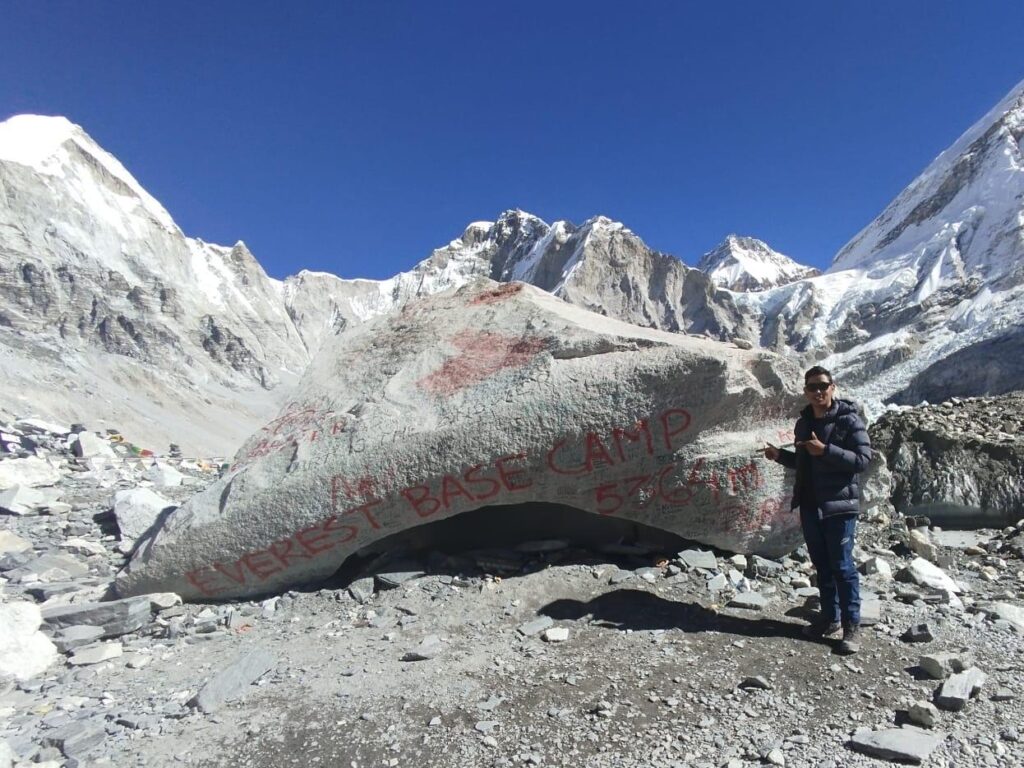
Customized Itinerary with White Hill Adventure
It’s essential to choose a route that aligns with your fitness level, time availability, and preferences for scenery and cultural immersion. For that, White Hill Adventure offers customizable itineraries and plans according to your needs. With any trek in Everest, you’ll maintain a well-marked trail, passing through Sherpa villages and crossing frequent checkpoints. Each day involves hiking for several hours with breaks for meals and frequent rests. Accommodations along the trail range from basic teahouses to basic lodges. While you plan your route, it’s essential to have an acclimatization day for a smooth and safe climbing experience. During this day, you can connect with the locals and roam around the village.
Choosing the Best Season for Trekking
One of the critical factors that can significantly enhance your experience of the Everest Trek is the selection of the perfect season to embark on this journey. Each season in the Everest region offers unique advantages and challenges, so it becomes essential to have an understanding of the season you’re going to trek.
Spring (March to May):
Spring is considered to be the best time to trek in the Everest region due to its mild temperatures, clear skies, and great views. The hills are covered in blooming red rhododendrons, offering a magical trail experience. With vibrant colors making the trail even more beautiful, the flora and fauna of the Sagarmatha National Park come to life during this time. The clear skies offer excellent visibility, of snow-capped peaks like Everest, Lhotse, and Nuptse.
However, Spring being the most popular season for trekking, you should expect more crowds and increased prices for food and lodging. In some cases, pre-booking for teahouses is necessary.
Autumn (September to November):
Autumn is another ideal season for trekking in the Everest region with clear skies and stable conditions. The temperatures are mild during the daytime for a smoother trekking experience. In addition, trekkers can witness the harvest season in Sherpa villages, gaining insights into agricultural and cultural practices.
The post-monsoon season leaves a crisp air offering spectacular views of the Himalayan peaks with minimal cloud cover. Like spring, autumn attracts a significant number of trekkers, so make sure to plan accordingly.
Winter (December to February):
While winter brings colder temperatures and snowfall to the Everest region, it offers significantly quieter trails with fewer tourists, leaving the whole region to you. Prices are lowered for accommodation and food during this time of the year. Clear skies during winter provide equally satisfying views as spring and autumn.
However, trekking in winter is definitely not for beginners, as the temperature can get extreme quickly. With unpredictable weather and potential trail closures due to heavy snowfall at higher elevations.
Monsoon (June to August):
Trekking in the monsoon season is not recommended, as it brings heavy rainfall and cloudy skies to the Everest region. As the clouds continue to cover the whole region for a couple of months, the probability of witnessing the glorious beauty of this region is less. In addition, trekking during the monsoon involves extreme challenges, which are hazardous. The trails get muddy and slippery, with the risk of landslides being high in certain parts of the trail. Frequent rainfall and fog cause poor visibility, limiting the overall experience.
In conclusion, the best season for trekking in the Everest region ultimately depends on personal preferences. Whether you prefer mild temperatures and blooming rhododendrons in spring, or the snowy landscapes in the winter, there’s a season that serves to every adventurer’s taste. However, you must carefully consider the pros and cons of each season for a safe, enjoyable, and memorable Everest Trek experience. Consult with White Hill Adventures to find a season that suits your needs the best.
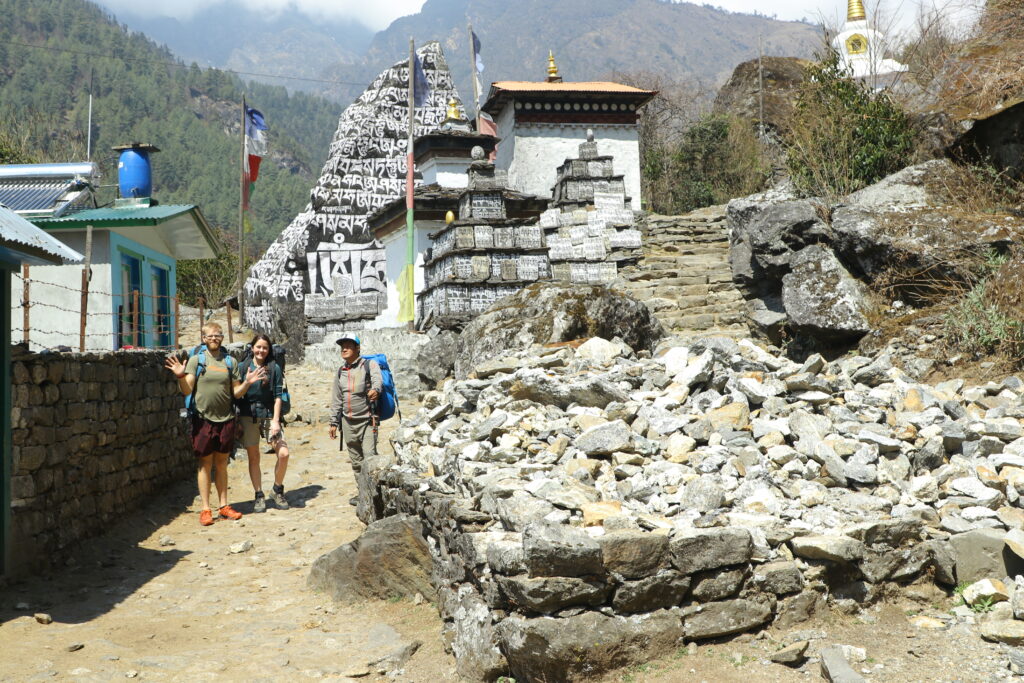
Challenges and Preparations
Trekking at such high altitudes, the Everest Trek comes with its own set of challenges and risks. It is essential for one who’s planning to trek Everest to know about possible challenges and the way to encounter them. High altitude, altitude sickness, rugged terrain, and unpredictable weather become some of the challenges that every trekker faces. Altitude sickness becomes one of the major problems when going above an altitude of 3000+ meters. To prevent it, adequate hydration, nutrition, and properly planned acclimatization days are essential. Moreover, trekkers must be in great physical condition and familiar with hiking for hours and several days. Additionally, trekkers should invest in quality gear, including sturdy hiking boots, proper clothes, sleeping bags, and trekking poles. White Hill Adventure provides renting of trekking accessories.
Accommodation and Food:
Everest, being one of the most popular trekking destinations in the world, has numerous possibilities for accommodation services. Trekkers usually rest in teahouses run by Sherpa families, but some famous checkpoints like Namche Bazaar offer more luxurious accommodation services too. These cozy accommodations offer simple rooms with shared bathrooms, optimal for a well-deserved rest after a long day of trekking. Some accommodations also come with additional facilities such as internet and hot showers, but they do come with an extra price tag.
When it comes to food in these accommodations, mostly you dine on traditional Nepalese cuisines (Dal Bhat, momo, noodles), but some places may also offer Western cuisine like pizza and pasta. During peak trekking seasons like spring and autumn, with the increasing flow of tourists in the region, getting proper accommodation may be a problem. With White Hill Adventure, and its partner along the route you can get clean and reliable accommodation.
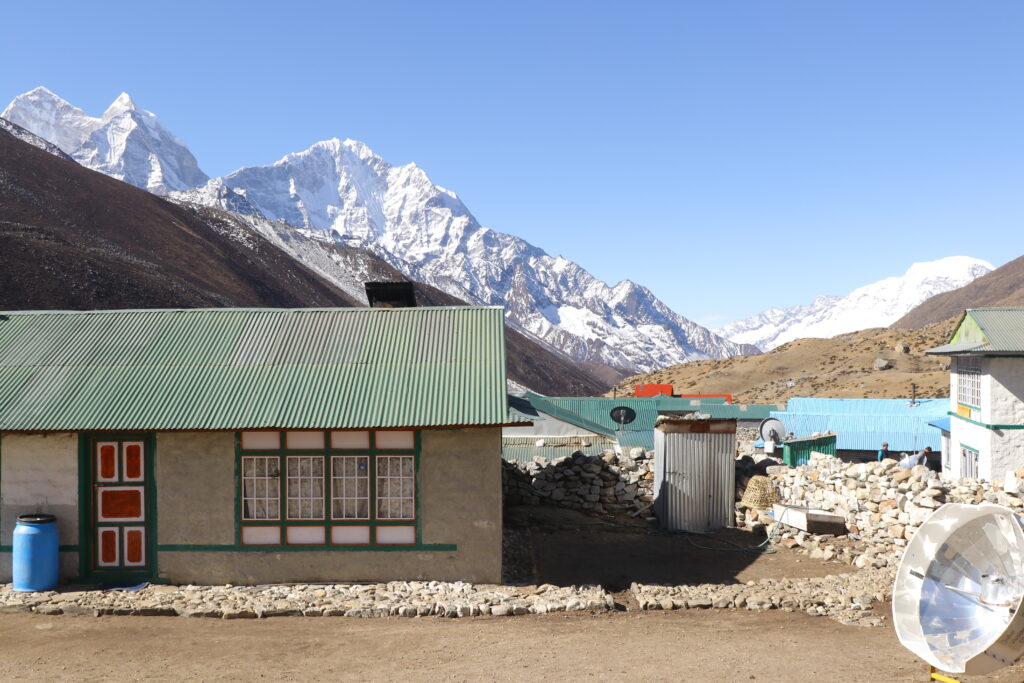
Cultural Immersion and Hospitality
Trekking in the Himalayas of Nepal offers a unique opportunity to immerse oneself in the rich culture and hospitality of the Sherpa people. All along the trail, you get to witness traditional Sherpa villages decorated with colorful prayer flags. The guides of White Hill Adventure, provide you with insights into the cultural practices of the region, enriching your whole journey.
As you spend the days in these villages, you get a better understanding of the region, their lifestyle, and cuisine. The Sherpas are known for their hospitality, as sometimes sharing stories with them becomes a heartwarming experience. You can also visit cheese-making factories in such villages, which produce yak cheeses from the yaks of the Himalayas. Throughout the trail, you’ll pass through plenty of monasteries such as the famous Tengboche Monastery and other small ones adding cultural value to your trek.
FAQ section:
How difficult is the Everest Base Camp trek?
The Everest Base Camp Trek is considered a moderately challenging trek. Trekkers are expected to have a good level of physical fitness and be prepared for long days of hiking across various terrain and changes in altitude.
What is the best time of year to trek to Everest Base Camp?
The best time to trek to Everest is during the spring (March to May) and autumn (September to November) seasons. These seasons provide the best views, clear skies, and optimal trekking conditions.
At what altitude is Everest Base Camp located?
Everest Base Camp is situated at an altitude of approximately 5,364 meters (17,598 feet) above sea level. Trekkers should be aware of the effects of high altitude and take necessary precautions to prevent altitude sickness.
How long does it take to complete the Everest trek?
The duration of the Everest trek varies depending on the route and itinerary chosen. On average, a base camp trek takes about 12 to 14 days to complete, including acclimatization days. Shorter panoramic view treks may take a comparatively shorter time.
What type of accommodation is available during the Everest trek?
Accommodation along the Everest trek consists of teahouses and lodges run by local Sherpa families. This accommodation offers basic amenities such as simple rooms, blankets, beds, shared bathrooms, and shared dining areas where traditional Nepalese cuisine is served.
Conclusion
In conclusion, there’s no denying that one of the world’s top trekking locations is the Everest Trek. A glimpse of the undisturbed beauty of nature, the greatness of adventure, and cultural immersion. Trekkers can observe some of the most breathtaking landscapes along the trail. Expect innumerable moments of inspiration and discovery in addition to physical obstacles as you get ready to enter this world of magic. For many people, Everest Trek has been a healing trek, as they spend time with nature. You develop a closer bond with the surrounding environment and lively culture as the day goes on.
Join hands with White Hill Adventure, pack your sense of wonder, and get ready to be swept away by the magic of Everest’s iconic landscapes. May this journey be more than just a trek; may it be a transformative experience that leaves an incredible mark on your heart and soul. Everest awaits you.

